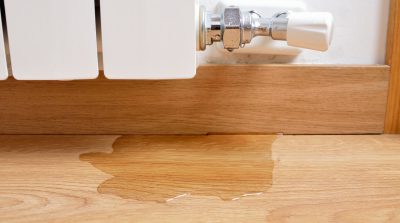Every letting agent has dealt with common repairs when managing a property and these repairs are often complicated, time-consuming, involve co-ordinating lots of people and, let’s face it, are difficult to manage alongside your already high workload.
So let’s take a look at how you can quickly get a handle on what needs done and work effectively with others to get the issue resolved quickly and to the satisfaction of all involved.
Getting started
Here’s a common scenario: your tenant gets in touch to let you know about a damp patch on their ceiling – the dreaded leak from above.
First, it’s a good idea to ask your tenant when they noticed the dampness, where they believe it may be coming from, and if they have made any attempt to contact the occupants of that flat. Having this information on file will help you and the landlord with the insurance claim process down the line, if you need to make one.
Depending on the severity of the leak, you may want to engage a contractor to carry out a professional assessment and mitigate further damage to your client’s property, and of course, ask your tenant to knock on the door of the flat they think the leak is coming from to tell them what’s happening.
Taking the right steps in managing common repairs
Next, contact the landlord to tell them about the leak and what you are intending to do. Remember that under The Letting Agent Code of Practice, you must promptly inform the appropriate person – the landlord or tenant (or both) – of any repair issues.
Contact the factor (if there is one) to let them know what’s happened – be sure to check that you have delegated authority in place from your landlord to work with the factor.
It’s helpful to give factors as much information as you can. This could include when the leak started, where it has originated from, whether it’s ongoing, and any resultant damage.
It’s a good idea to do this by email so that you have a written record for your files, but if you need to contact them either by phone or face-to-face, you can send a summary of your discussion via email, so you still have a record for your files.
If there is no factor, you can still work with the co-owners in the building to ensure the repair is completed. Of course, it can sometimes be difficult to locate the co-owners, but there are some helpful guides on how to do so.
The next step is to arrange a visit to the property to take photographs and document the damage, or agree with the tenant that they will provide you with this information. Your written policy and procedure on managing repairs, including leaks from above, should state what you will do when notified of an issue such as this.
Collate your information, along with your assessment on what’s required once the leak is repaired, and communicate this to the landlord.
If you don’t have authority to proceed on the landlord’s behalf, then you are simply presenting them with the information they will require to carry out repairs or make an insurance claim. If this is the case, then you need to clearly communicate to the tenant what you have done so far, how things will proceed, and the landlord’s contact details, if they don’t have them already.
But let’s assume you do have authority to proceed from your landlord. You will want to get in touch with the factor again to confirm the process for having repairs carried out and what the insurance claim process is if it’s required.
Always keep the landlord and tenant up-to-date on how the repair work will be carried out, who will be responsible for doing this, what access will be required and when. If an insurance claim needs to be made, then you must inform the landlord and tenant when this will be made and what the timescales involved are.
One thing to be clear on is the access requirements to the property. You will need to make sure that if the factor or insurer requires access to the property, they are aware of the access notifications you are obliged to give the tenant, and they understand that unless it’s a genuine emergency, they must abide by these.
Finally, make sure you are regularly reviewing your file on this situation and that you are updating your records to reflect what’s happening in real time.
Once works are done, arrange a visit to check everything has been completed satisfactorily. Take photos for your files and update the records, then close the file.
But wait! Before you move on to the next firefight, consider checking these steps are in place to help you prepare for managing future common repairs:
- Setting out in your terms of business agreement with your landlord what you will do in the event of a common repair arising, and whether you charge a separate fee for this;
- Obtaining delegated authority from your landlord so you can easily communicate with a factor, an insurance company or another third-party organisation;
- Having policies and procedures in place to accurately reflect what you are doing in real time in similar situations;
- Giving clear information in your move-in packs, on your website, and other communications, so tenants will know what they need to do in the event of a leak or another emergency. This can include 24-hour emergency contact details, links or details to services such as Scottish Water, the factor for their building or local Council Environmental Health Team;
- Regularly communicating with all parties to help keep everyone informed.
Keeping on top of common repairs, which can come out of nowhere and often at the worst possible time, requires methodical thinking and putting best practice into use. However, with a bit of preparation, you can address the issue quickly and leave all parties impressed with you and your agency’s problem-solving skills.













